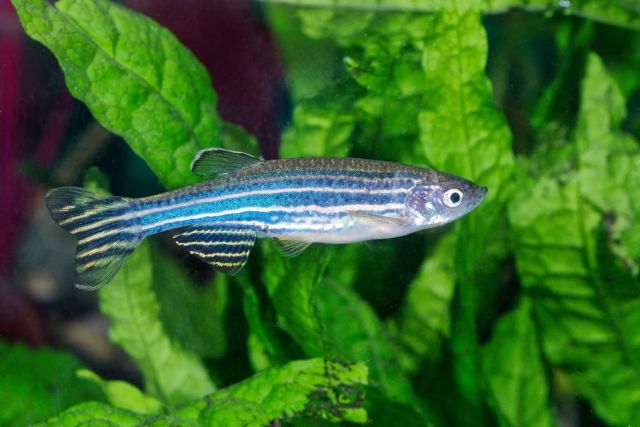Principal Investigator
:
Dr hab. Barbara Uszczyńska-Ratajczak
Centre of New Technologies University of Warsaw
Panel: NZ3
Funding scheme
: POLONEZ 3
announced on
15 September 2016
Mitochondrial dysfunctions can affect almost any part of our body, including the brain, nerves, muscles, heart, kidneys, eyes and pancreas. Many human diseases are related to their dysfunctions, including muscular dystrophy, cancer and neurodegenerative diseases such as Alzheimer’s disease or Parkinson’s disease.
Eukaryotic cells can be compared to mobile phones. Both of them are small and powerful and can work as a stand-alone system or easily interact with others. Each mobile phone consists of subassemblies that have well-defined functions and efficiently co-operate with each other. In eukaryotic cells these subassemblies are called organelles and are essential for their proper functioning. Of these, mitochondria are the most unusual. They act as a self-charging battery that provides energy for the cell. To maximize their productivity, mitochondria have a specific structure. They consist of two membranes: outer and inner. The outer membrane fully surrounds the inner membrane like a rubber bumper that completely covers the mobile phone from all sides. Contrary to the smooth outside of the mobile phone that is fitted around by the bumper, the mitochondrial inner membrane folds many times and creates layered structures. As a result, the two membranes are not in direct, physical contact and a small intermembrane space is formed between them. The inner membrane surrounds the mitochondrial matrix and those two components act together to produce the energy for the cell.
 Another feature that makes mitochondria special is the presence of their own DNA. Although the size of mitochondrial DNA is not as large as the nuclear one, it encodes 13 components that are crucial for energy production. However, for mitochondria to be fully active requires more than 1000 proteins. The remaining 99% of mitochondrial proteins are encoded by nuclear DNA and need to be imported into mitochondria. This process is not easy due to the complex mitochondrial structure and requires special machinery that helps proteins to get to their final destinations in mitochondria. Mitochondrial dysfunctions caused by an imbalance in protein import have serious consequences for the cell and are associated with different diseases. The majority of mitochondria-related diseases affect the brain and muscles, due to their high energy requirements. Alzheimer’s disease is currently the most common form of dementia, affecting 46 million people worldwide and it is estimated that by 2050, the number of cases will triple.
Another feature that makes mitochondria special is the presence of their own DNA. Although the size of mitochondrial DNA is not as large as the nuclear one, it encodes 13 components that are crucial for energy production. However, for mitochondria to be fully active requires more than 1000 proteins. The remaining 99% of mitochondrial proteins are encoded by nuclear DNA and need to be imported into mitochondria. This process is not easy due to the complex mitochondrial structure and requires special machinery that helps proteins to get to their final destinations in mitochondria. Mitochondrial dysfunctions caused by an imbalance in protein import have serious consequences for the cell and are associated with different diseases. The majority of mitochondria-related diseases affect the brain and muscles, due to their high energy requirements. Alzheimer’s disease is currently the most common form of dementia, affecting 46 million people worldwide and it is estimated that by 2050, the number of cases will triple.
We know a lot about the system that helps to transport mitochondrial proteins, but it is not clear what is happening at the cytosolic stage of the mitochondrial transport. The main question was to understand whether all mitochondrial proteins are transported after completing their production in the cytosol or for some of them the production is coupled with the import into the mitochondria. We addressed this question using zebrafish as a model organism. Zebrafish is a small tropical fish that shares many similarities with humans. Moreover, humans and zebrafish share 70% of genes, and 84% of genes known to be associated with human pathologies have a counterpart in zebrafish. These features ensure that information acquired through zebrafish is more accurate than obtained by in vitro studies, thus easier to extrapolate to human biology.
Altogether the results of the project indicate that the post-translational import, where the proteins are first synthetized in the cytosol and then imported into mitochondria is the main route for mitochondrial proteins. Whereas coupling the protein synthesis with the mitochondrial import seems to be a specialized route taken by some proteins with special properties that would be difficult to get imported in a post-translational manner. Interestingly, it seems that cells can use other organelles to facilitate the mitochondrial protein import, e.g. endoplasmic reticulum, which is like a stand-alone centre for the synthesis and folding of special types of proteins. Moreover, we also indicated that the impairment of the import of the intermembrane space proteins triggers abnormalities in the development and physiology of the liver and pancreas. We also identified the acinar cells that produce and transport enzymes, assisting in the digestion of food, to be severely affected by the disorders in mitochondrial biogenesis. Our data contribute to a better understanding of the molecular, cellular and organismal effects of mitochondrial deficiency, important for the accurate diagnosis and future treatment strategies of mitochondrial diseases.
How did you benefit from the POLONEZ fellowship?
The POLONEZ fellowship encourages women’s advancement. It is particularly important for me, as I am aiming to reach a leading position in research, while fulfilling maternity responsibilities at the same time. The broad spectrum of courses helped me to improve my personal effectiveness, project management and presentation skills. I simply started to feel more confident in bioinformatics - the fast-moving and highly competitive field of my research.
Project title: Principles of mitochondrial protein compartmentalization in vertebrates
Dr hab. Barbara Uszczyńska-Ratajczak
She received her PhD in Biochemistry from the Institute of Bioorganic Chemistry, PAS in Poznań in 2013. After completion of her degree, she joined the group of Prof. Roderic Guigo at the Centre for Genomic Regulation in Barcelona, where she worked on the identification of full-length long noncoding RNAs (lncRNAs) in human and mouse genomes. Since 2020, he has been leading a research group at the Institute of Bioorganic Chemistry of the Polish Academy of Sciences in Poznań. Her main research focus is the identification and characterization of long non-coding RNAs in vertebrate genomes. A holder of the 20th edition of the L’OREAL-Unesco for Women and Science award. In 2021, the Scientific Council of the Institute of Bioorganic Chemistry of the Polish Academy of Sciences in Poznań awarded her with the Doctor of Science (D.Sc.) title in the field of biological sciences.


